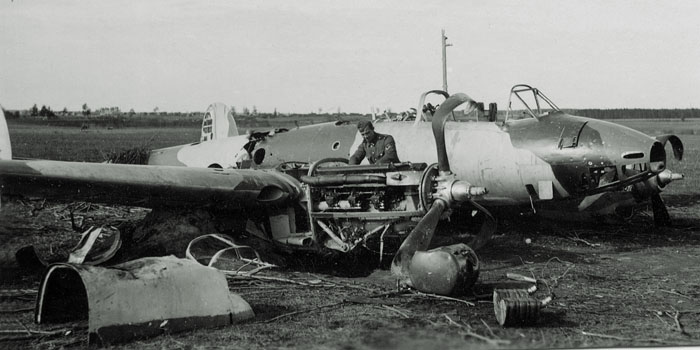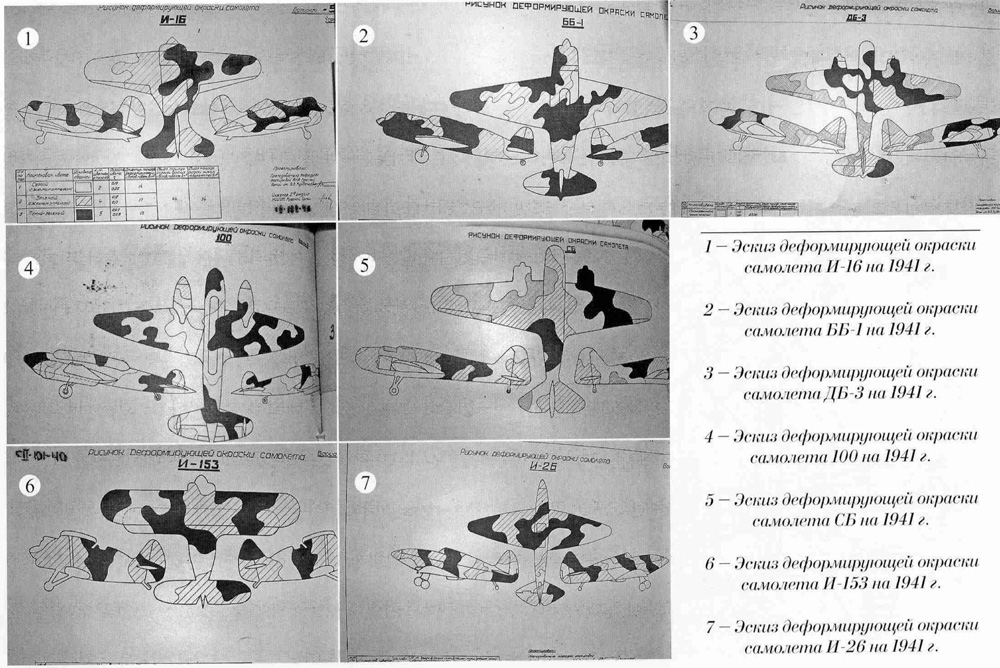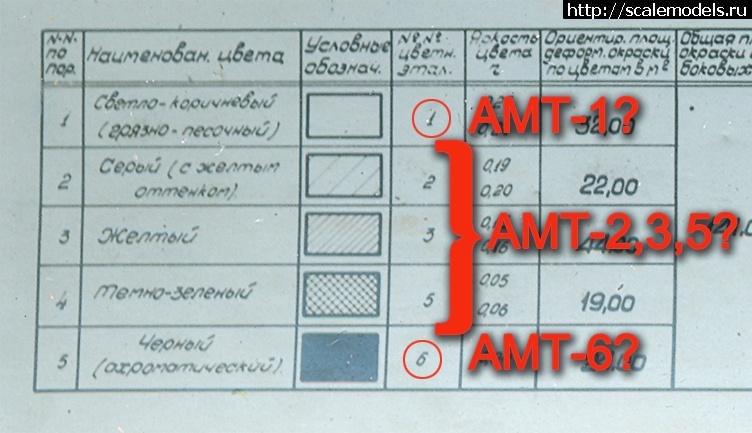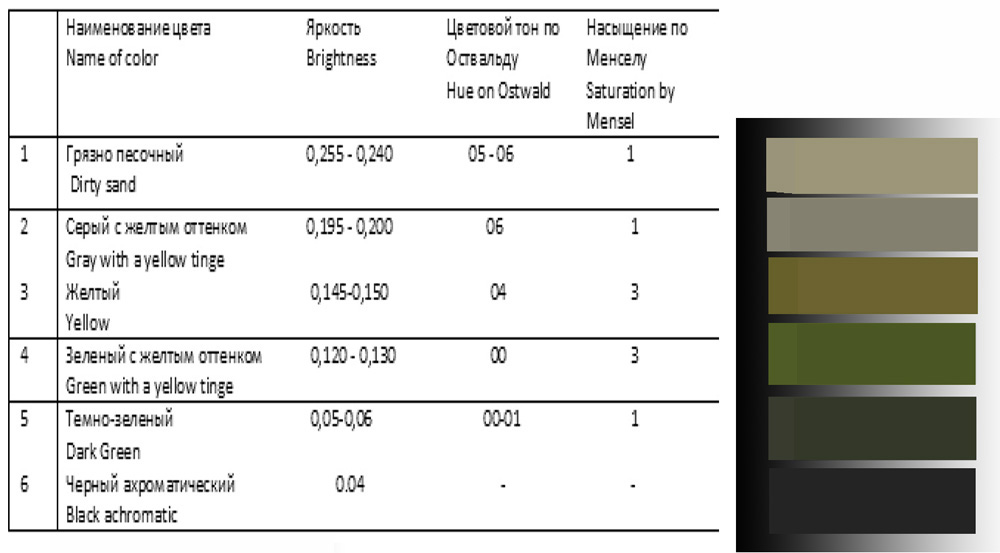| |
|
 |
Plane n.12 is the only one whose photo let clearly see a red star on
the fuselage side. Besides, the camo is soft and looks mottled on the
fuselage close to the tail, and look very different from that of the other
planes of the unit. |
 |
Another image of plane n.12. It's difficult to interpretate the discontinuity
in shade on this side of the fuselage. Probably the camouflaging colors
were intentionally made asymmetric, lighter on the left side, on this
plane. |
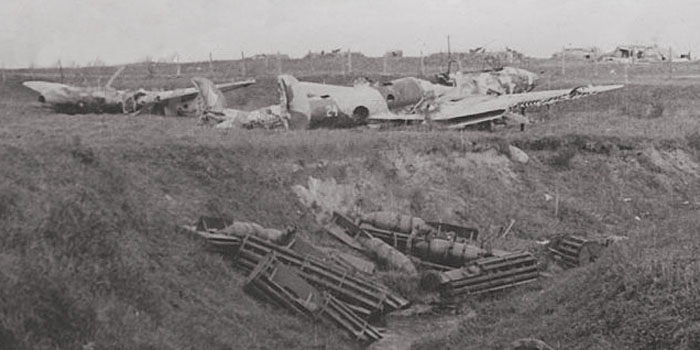 |
Here we see a depression on the ground, close to some planes, where
many Russian bombs with their wood canisters were abandoned. Plane
n.24, the best documented of this unit, is visible here.
The fabric tail surfaces have been burnt, Besides the fuselage behind
the cockpit is broken, perhaps with a grenade to make impossible to
repair the plane.
These damages could have been done by retiring Soviet troops that had
to leave the plane on the airfield. |
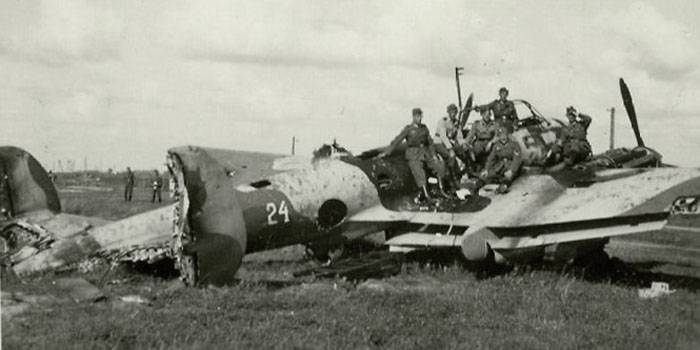 |
Some photos suggest that it could include up to 5 shades on upper
surfaces. Both the supposed lighter shades are hardly distinguishable,
or undistinguishable, on photos, but the extension of light patches
is unlikely wide for one color, compared to the darker ones.
If the planes were painted at the unit, so it's likely that part of
the original factory colors, green A-19f and light blue-grey A-18f ,
were preserved.
On many planes, the colors are accurately brush-painted, and have a
semigloss finish.
The prop blades appear painted black, a progress over prewar use to
leave them unpainted.
It is likely that the bands that seem of an unique light color were
of two different colors, nearly unistinguishable on the bw images. At
least one of these colors was subject to strong chipping; this suggests
the use of an improvised paint unapt to adhere well on the underlying
layer of paint.
A small red star is barely visible on the tail, overposed to the dark
mottle.
|
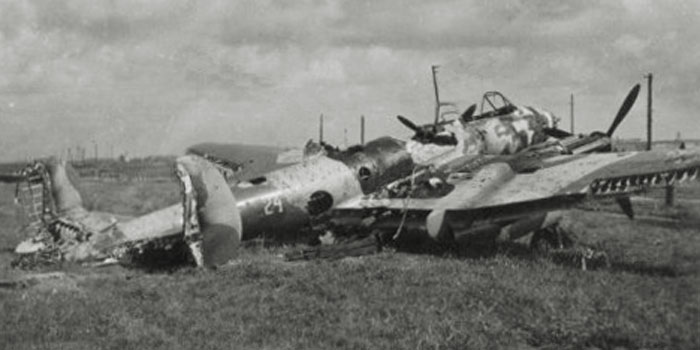 |
Below: The painting of the nose is strange; it's unclear
if it's intentional, or resulted from repaintings, deterioration or
vandalism. |
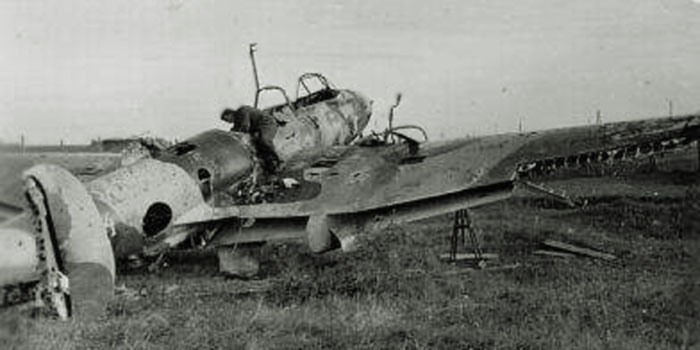 |
Again, plane n.24 in even worst condition. The camouflage looks to extend
under the fuselage. |
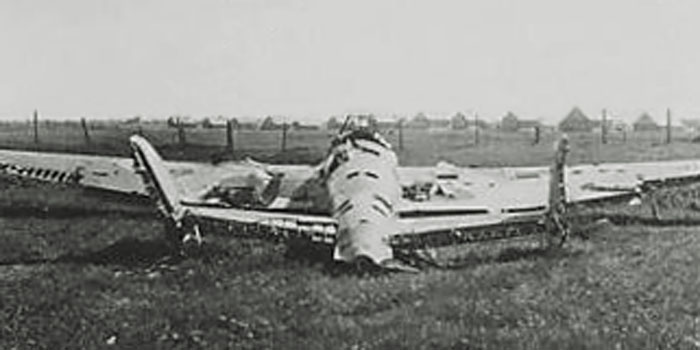
|
This image of 24 from behind, although poor, allows to understand
how was the camouflage on the left wingroot. |
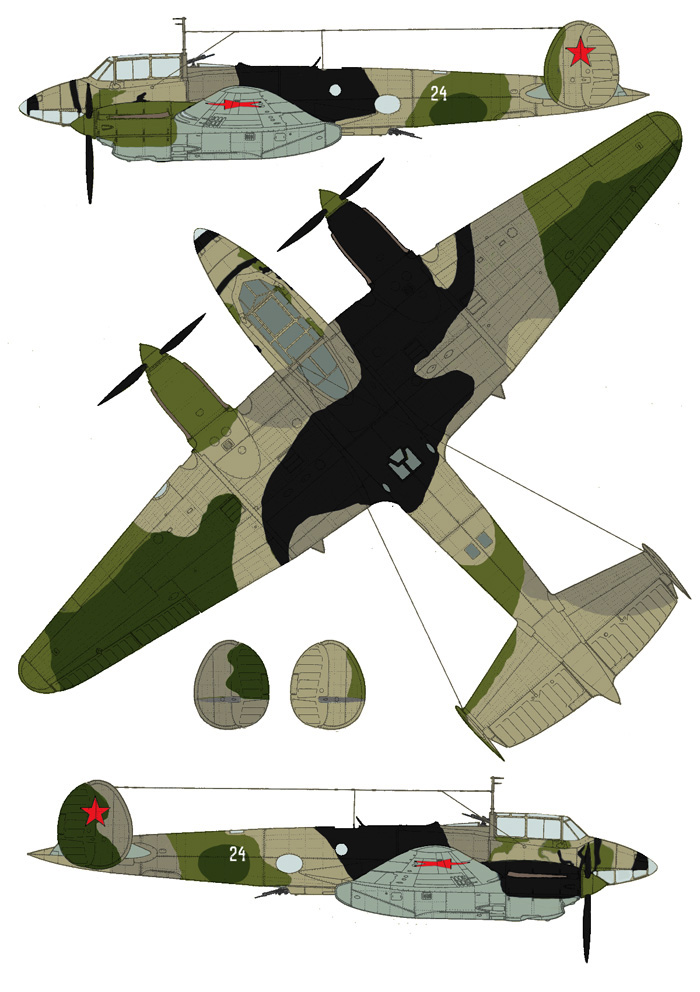 |
Here is a sketch of the painting of plane 24. Where unclear on the
photos, the camouflage was continued on the base of photos of similar
planes and by guessing.
The choice of shades was based on the previously seen palette; the
division between the supposed sand and grey areas, undistinguishable
on the photo, is a guess;
the photos doesn't seem to show areas with a medium color, suggesting
that there were not bands of (AMT?)-3, yellow-brown, on this plane. |
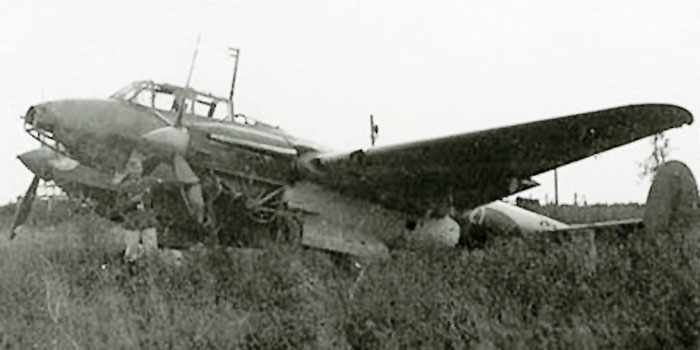 |
Plane n.27. The camo pattern is somewhat different from n.24; it has
many outlines on common, but colors look exchanged. |
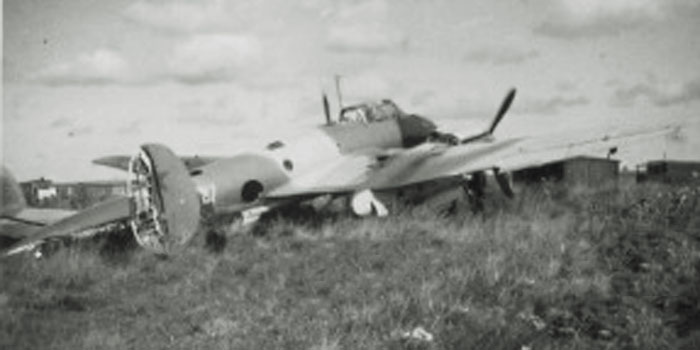 |
Plane n.27.
The contours of the camo are similar to that of n°. 24, but the
colors appear exchanged. The camo seems not to extend under the fuselage.
Note that, while the most part of the demarcation lines appear hard,
some are clearly soft. |
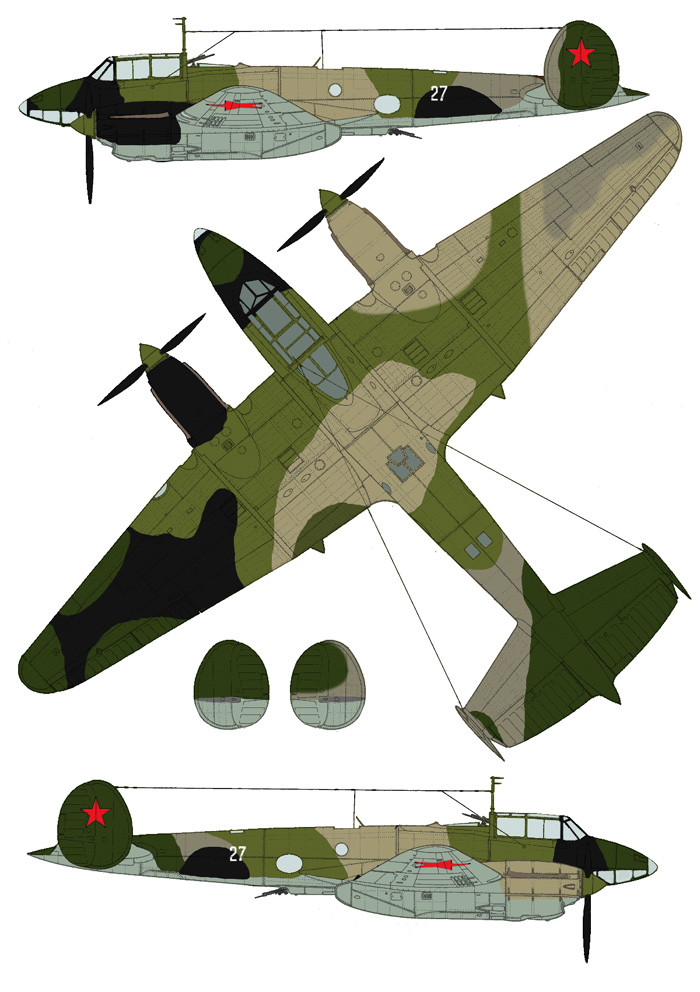 |
An interpretation of the camouflage of plane 27 made with the same
assumptions of n.24.
Seems that the outlines are forthemost from the same sketch of n.24,
but colors appear exchanged.
Note some soft border lines, particularly on the right wing. |
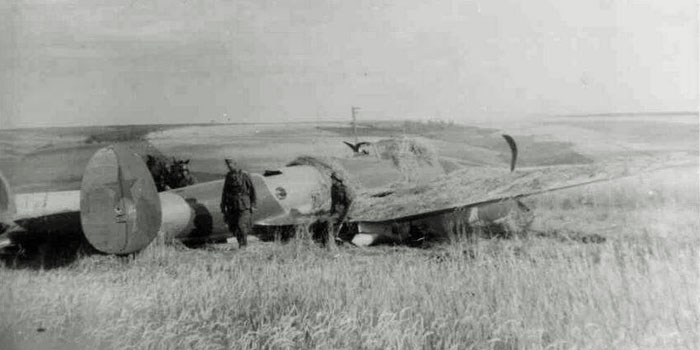 |
On the back of this photo, there is written: "Monoplane 28,
21.7.41".
No any number is visible on the fuselage, although the position should
be about where the shadow of the soldier is. A small 7 looks visible
on the tail., close to the blotch.
Note that the plane was partially covered by grass or nets after the
belly landing, when the ground was still in Soviet control; this seems
to confirm that the camouflage wasn't very effective on the ground,
because of the massive presence of light grey. |
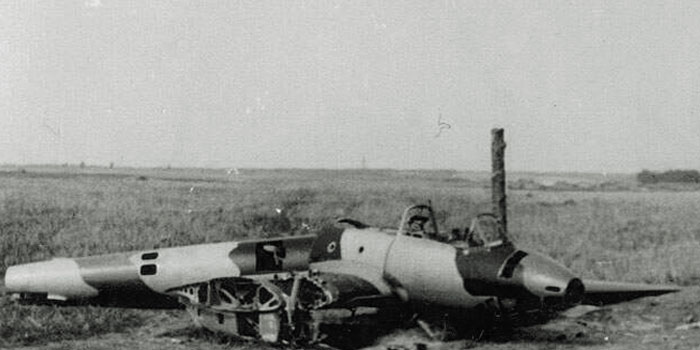 |
A dismantled plane with paint still in good condition. The wide extension
of the lighter bands encourages to believe that they were of two different
colors, undistinguishable on bw photos. |
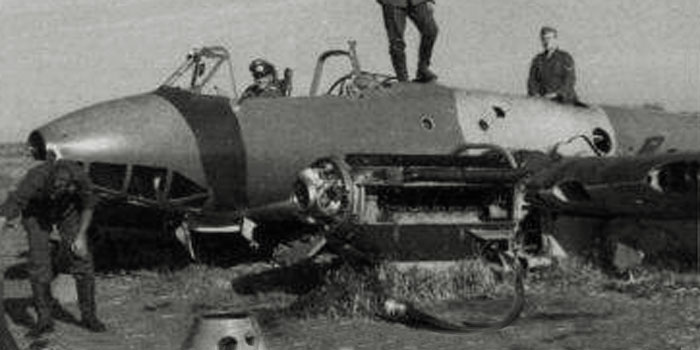 |
Another dismanted plane after a belly landing. |
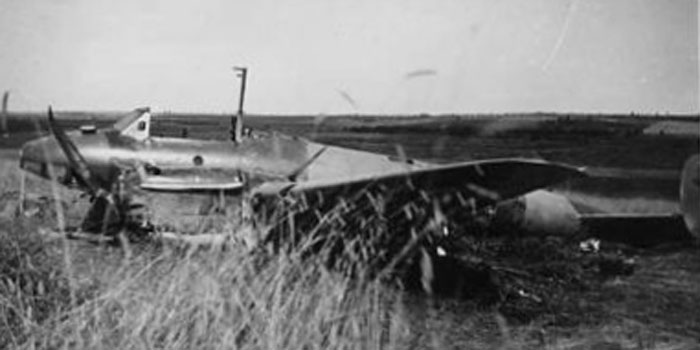 |
Another (or the same?) plane after a belly landing.
|
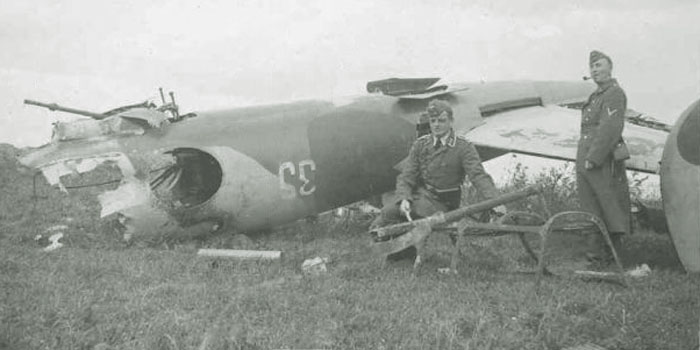 |
Crashed rear section of plane white 35, that has many points in common
with n.24.
Surprisingly, it looks that on this plane the camo could be extended
under the fuselage.
The light color of the camouflage appears just a bit darker than the
original light blue of the undersurfaces. |
 |
Another image of 35. the undersurface of tail looks chipped, leaving
to see a darker color. Possibly, in a first time the dark camouflage was
extended under the tail surfaces, then someone changed his mind and they
were repainted light blue that started to chip away. |
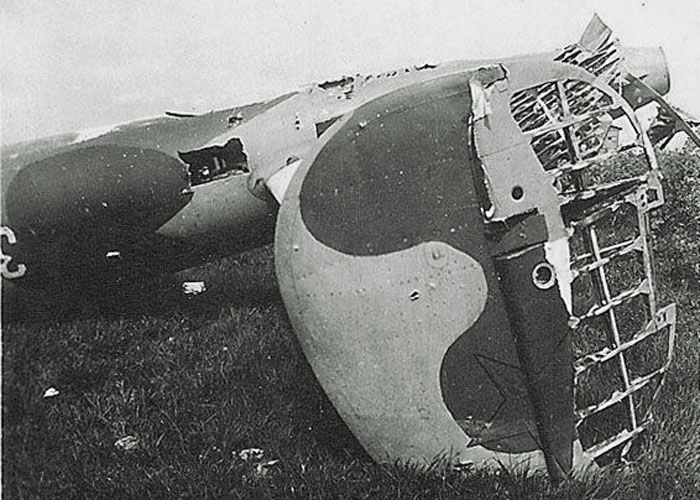 |
This clear image let clearly see the hard lines of the camouflage and
the black outline around the red star. |
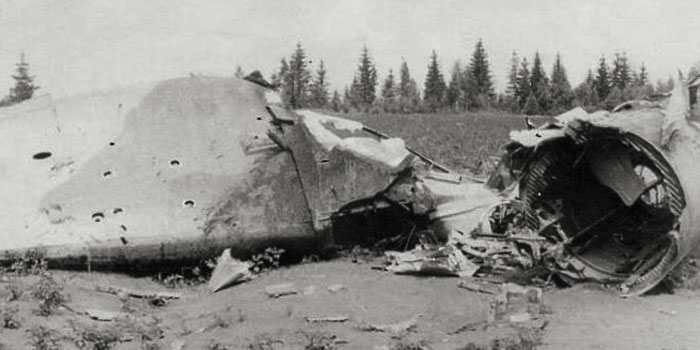 |
Remains of a Pe-2, perhaps n.35. |
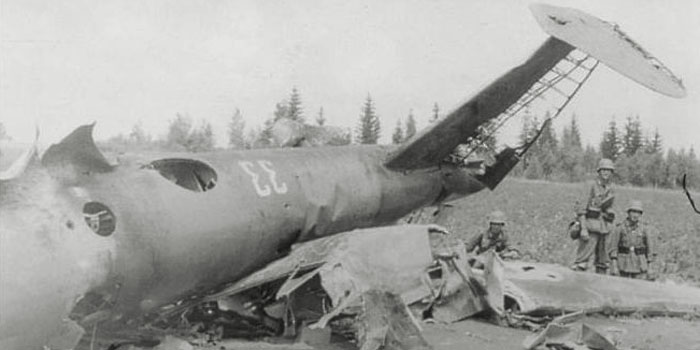 |
Plane n.33 seem to feature a soft camouflage. |
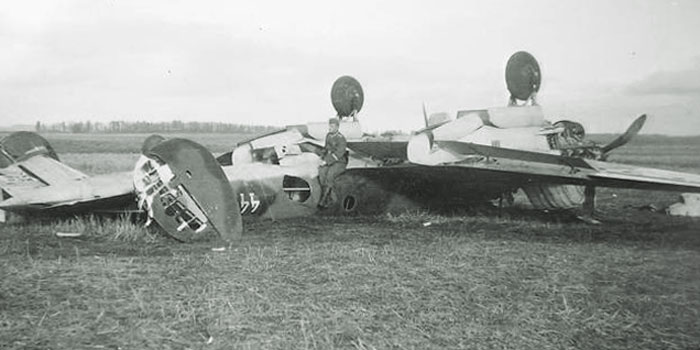

|
Left:
Plane n.44 looks to have been put upside down by a bomb explosion on
the ground. Unusually, the camo lines appear soft.
Despite the fonts of the numbers resembling to those seen on the polichromatic
Pe-2s, this plane could have an usual black/green camouflage instead
of a polichromatic one.
Below:
piece of wing of an unidentified Pe-2 of the same unit; unlike n.44,
this looks to have his camo extended on the sides of engine nacelles.
The black outline of the star is visible.
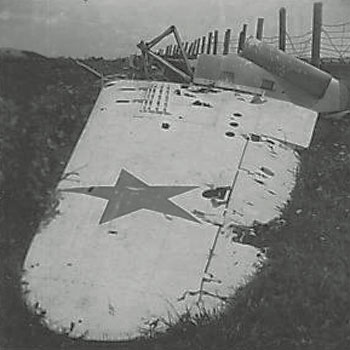
|
| 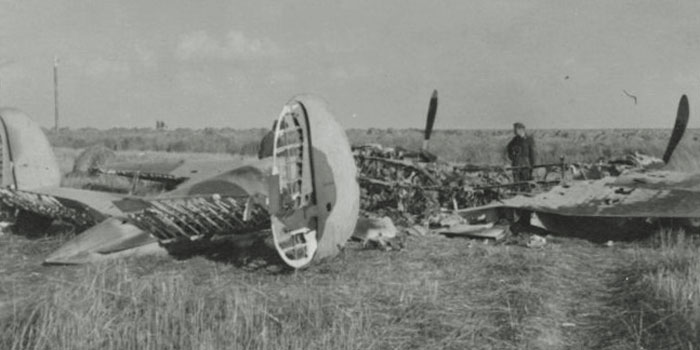
|
The sad remains of another Pe-2, that received not any luck by his
original painting. The tail star is not visible in its usual positioning,
or perhaps it's lower than usual, confused in the dark spot.
|
